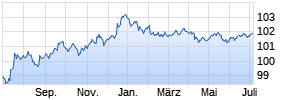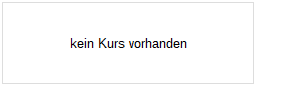
Northern Ireland Electricity Networks Limited - Annual Financial Report
PR Newswire
London, March 8
Northern Ireland Electricity Networks Limited's Report and Accounts for the year ended 31 December 2015 have been submitted to the National Storage Mechanism and will shortly be available for inspection at: http://www.morningstar.co.uk/uk/NSM and are available on Northern Ireland Electricity Networks Limited's website at:
Contact for enquiries:
NIE Networks Corporate Communications – telephone 0845 300 3556
The full report and accounts follow:-
2015 AT A GLANCE
- Continued strong health and safety management with no lost time incidents
- 20% increase in network investment reflecting ramp up in the work programme to deliver the outputs under the RP5 price control determination
- Good network performance, notwithstanding the increase in planned outages required by the increased work programme
- Renewable generation connected to the electricity network reached 846MW - c.24% of total generation in Northern Ireland
- Renewed focus on customer service with launch of “Think Customer” initiative
- Separate Network Connections business unit created to bring increased customer focus
- Re-naming as Northern Ireland Electricity Networks Limited to clarify role as networks provider
- Satisfactory operating profit performance of £92.3m
- Total gross capital expenditure of £138.6m to grow the regulatory asset base
- Over £140m contributed to the Northern Ireland economy through employment of 1,222 people and payments to local businesses and authorities
GROUP STRATEGIC REPORT
ARIVA.DE Börsen-Geflüster
Kurse
 |
 |
The directors present their annual report and accounts for Northern Ireland Electricity Networks Limited (NIE Networks or the Company) and its subsidiary undertakings (the Group) for the year ended 31 December 2015. The Company was renamed on 18 September 2015 in order to clarify for customers the Company’s role as the electricity networks provider in Northern Ireland (previously named Northern Ireland Electricity Limited).
NIE Networks’ operating subsidiary companies are NIE Networks Services Limited and NIE Finance PLC.
The Group accounts have been prepared in accordance with International Financial Reporting Standards (IFRS) as adopted by the European Union (EU) and applied in accordance with the provisions of the Companies Act 2006. During the year the Company transitioned from EU-adopted IFRS to FRS 101 – Reduced Disclosure Framework and has taken advantage of the disclosure exemptions allowed under this standard.
Ownership
NIE Networks is part of the Electricity Supply Board (ESB), the vertically integrated energy group based in the Republic of Ireland (RoI). NIE Networks is an independent business within ESB with its own Board of Directors, management and staff.
Business Model
Principal Activities and Regulation
The Group’s principal activities are:
- constructing and maintaining the electricity transmission and distribution networks in Northern Ireland and operating the distribution network;
- connecting demand and renewable generation customers to the transmission and distribution networks; and
- providing electricity meters in Northern Ireland and providing metering data to suppliers and market operators to enable wholesale and retail settlement.
NIE Networks owns the transmission and distribution networks in Northern Ireland and is the distribution network operator. SONI Limited (SONI) is the transmission system operator and is responsible for transmission system design and planning.
The Company derives its revenue principally through charges for use of the distribution system and Public Service Obligation (PSO) charges levied on electricity suppliers and charges for transmission services (mainly for use of the transmission system) levied on SONI. Revenue through charges for new demand and generation connections is received from the customer in accordance with the Statement of Connection Charges, which is revised each year.
NIE Networks is regulated by the Northern Ireland Authority for Utility Regulation (the Utility Regulator) and the Department of Enterprise Trade and Investment (DETI). Its operations are regulated under its Participate in Transmission Licence (Transmission Licence) and Electricity Distribution Licence (Distribution Licence). Under its Transmission and Distribution licences NIE Networks is required to develop, maintain, and in the case of the distribution system, operate an efficient, co-ordinated and economical system of:
- electricity transmission - the bulk transfer of electricity across the high voltage network of overhead lines, underground cables and associated equipment mainly operating at 275kV and 110kV; and
- electricity distribution - the transfer of electricity from the high voltage transmission system and its delivery to consumers across a network of overhead lines and underground cables operating at 33kV, 11kV and lower voltages.
In carrying out its responsibilities NIE Networks operates the electricity distribution network effectively to ‘keep the lights on’ for customers; inspects and maintains its assets so that they are in a condition to remain safe and reliable, repairs its assets if they get damaged or go faulty; replaces its assets once they become aged and in poor condition and upgrades existing networks or builds new infrastructure to provide additional electricity supplies or capacity to and from customers.
The transmission and distribution networks comprise a number of interconnected networks of overhead lines and underground cables which are used for the transfer of electricity to around 860,000 consumers via a number of substations. During the year an estimated 7.8 TWh of electricity was transmitted and distributed to consumers in Northern Ireland. There are 2,200km of transmission lines, 47,000km of distribution lines and almost 300 major substations, including 40 serving large wind farm sites. NIE Networks’ transmission system is connected to that of the RoI through a 275kV interconnector and to that in Scotland via the Moyle Interconnector. There are also two standby 110kV connections to the RoI.
This network sits between electricity generators and customers. NIE Networks does not buy or sell electricity, or send any bills to electricity customers (apart from charges for new connections to the network).
In addition to core network activities, NIE Networks provides meters to customers and takes meter readings. It is responsible for managing market registration processes and the provision and maintenance of accurate data to support the operation of the competitive retail and wholesale electricity markets. Market Registrations and Change of Supplier processes facilitate customers switching suppliers in a timely manner in accordance with retail market rules and aggregated data is provided to the Single Electricity Market Operator on a daily basis for settlement of the wholesale market.
The Company also provides connections to the network for customers requiring a new electricity supply (demand connections) and those seeking to generate electricity and may need to export it to the network (generation connections). NIE Networks is currently responsible for construction of all connections to the electricity network, however the Utility Regulator has announced the introduction of contestability for all new network connections which will bring competition from independent connection providers. NIE Networks is engaging with the Utility Regulator to enable the first phase of opening the market to competition by the end of May 2016, followed by full market opening by the end of 2017.
NIE Networks manages the transmission and distribution networks on an integrated basis. To the end of December 2015 the employees in NIE Networks’ subsidiary company, NIE Networks Services Limited, provided construction, maintenance, metering and other services to NIE Networks and were fully integrated into NIE Networks’ organisational structure. In order to simplify the Group structure, with effect from 1 January 2016, the responsibility for the functions and employees of NIE Networks Services Limited was transferred to NIE Networks and NIE Networks Services Limited ceased operational activity.
Price Controls
The Company is subject to periodic reviews in respect of the prices it may charge for use of the transmission and distribution networks in Northern Ireland.
The price control in respect of the fifth regulatory period since privatisation (RP5) commenced on 1 April 2012 and will apply for the period to 30 September 2017. The RP5 price control was determined in April 2014 following a referral to the Competition and Markets Authority (CMA - previously known as the Competition Commission). The formal licence modifications to implement the CMA’s determination are expected to be in place over the next few months.
The price control includes up-front allowances of £622m and £341m (December 2015 price base) in respect of capital and operating expenditures respectively with the up-front allowances being adjusted to reflect 50% of the difference between NIE Networks’ actual costs and the allowances. This is equivalent to the capital and operating cost allowances being calculated as the average of the up-front allowances and NIE Networks’ actual costs. The RP5 rate of return is 4.1% plus inflation (weighted average cost of capital based on pre tax cost of debt and post tax cost of equity).
The CMA substantially allowed the components of the investment plan proposed by NIE Networks, the main exceptions being the proposals for improving network performance and increasing the resilience of the 11kV rural network to ice accretion events. The Company’s emphasis during RP5 will be on the delivery of specified outputs particularly regarding asset replacement expenditure. If any projects or outputs are deferred to RP6, the RP5 allowance for these projects will be deducted from the capital expenditure allowance for RP6 to ensure that there is no double funding.
The price control also provides for additional capital expenditure relating to large transmission projects which may be approved by the Utility Regulator on a case-by-case basis.
The CMA adopted Ofgem’s classification of costs into “direct” costs and “indirect” costs for the purpose of setting the capital and operating expenditure allowances. New arrangements for annual reporting of costs will follow this classification based on Ofgem’s Regulatory Instructions and Guidance (RIGs). NIE Networks expects this will be of benefit by facilitating future benchmarking of its costs versus the GB network operators.
In respect of pensions, the price control adopts the Ofgem Pension RIGs methodology whereby the deficit is split into historical and incremental elements with the cut-off date for the historic deficit being 31 March 2012. The price control allowance for the historic deficit matches the deficit repayment profile agreed with the pension scheme trustees, subject to an annual disallowance of £4.7m (December 2015 price base) in respect of costs associated with early retirement schemes incurred by the Company between 1997 and 2003. The price control makes no allowance for any deficit costs which might arise in respect of pensionable service post 31 March 2012. It is expected that these costs, in conjunction with on-going service costs, will be subject to benchmarking with the GB network operators in future price controls.
In December 2015 the Utility Regulator published its overall approach in developing its RP6 price control determination. The RP6 price control is due to commence on 1 October 2017 and will run for a six and a half year period to 31 March 2024. The Company is in the process of developing its business plan for RP6, which is due to be submitted to the Utility Regulator in June 2016.
Energy Policy
In 2010, under the Strategic Energy Framework (SEF), the Northern Ireland Assembly set a target of achieving 40% of electricity consumption from renewable sources by 2020, with an interim target of 20% by 2015. By the end of 2015 renewable generation connected represented approximately 24% of total electricity generation in Northern Ireland.
Government support through the Northern Ireland Renewable Obligation (NIRO) scheme was a key enabler of this achievement and a mid-term review of the SEF is underway.
Strategy
NIE Networks’ strategic direction is determined primarily by obligations under its Transmission Licence and Distribution Licence. Its vision is to be a high performing electricity networks company that makes a positive contribution to the local community. Its mission is to distribute electricity in a safe, reliable, efficient and environmentally sound manner. The Company works to its stated values concerning safety, employees, customer service, innovation, integrity, efficiency and community.
NIE Networks’ strategic objectives are:
- the health and safety of employees, contractors and the general public;
- continued investment in Northern Ireland’s electricity infrastructure to: replace worn assets; facilitate increased customer demand; strengthen the reliability of the rural network in severe weather events; and facilitate the connection of further renewable generation;
- performance through people by ensuring a working environment that maximises the potential of employees;
- value growth incorporating a competitive and transparent cost base;
- maintaining a strong investment grade credit rating;
- strong customer service performance; and
- effective stakeholder engagement.
NIE Networks seeks to discharge its statutory and regulatory obligations in a manner which meets these strategic objectives.
Financial Review
Financial Key Performance Indicators (KPIs)
Operating Profit
The Group’s operating profit as reported in the accounts was £92.3m for the year to 31 December 2015, a reduction of £10.1m on the previous year. Group revenue of £236.1m reduced by £7.7m on the previous year primarily due to the phasing of RP5 tariffs. Group operating costs of £143.8m increased by £2.4m on the previous year primarily due to increased depreciation charges in line with the increasing asset base.
FFO Interest Cover
The ratio of FFO (funds from operations) to interest paid is a key internal measure of the Group’s financial health. FFO interest cover was 3.1 times for the year (2014 – 3.3 times). Notwithstanding the reduction from the previous year, the ratio is in line with the target level and confirms the Group’s continuing financial strength.
Net Assets
The Group’s net assets of £310.6m increased by £41.4m on the previous year largely reflecting profit after tax of £50.2m and remeasurement gains (net of tax) of £7.6m on net pension scheme liabilities, offset by a dividend paid to the shareholder during the year of £16.5m.
Cash Flow
Cash and cash equivalents decreased by £6.0m during the year due to net cash flows from operating activities of £148.0m offset by investing activity out flows of £137.5m and a dividend paid of £16.5m.
Financial Risk Management
The main financial risks faced by the Group relate to liquidity, funding, investment and financial risk, including interest rate and counterparty credit risk. The Group’s objective is to manage financial risks at optimum cost. The Group employs a continuous forecasting and monitoring process to manage risk.
Capital Management and Liquidity Risk
The Group is financed through a combination of equity and debt finance. Details in respect of the Group’s equity are shown in the Statement of Changes in Equity and in note 22 to the accounts. The Group’s debt finance at the year end comprised bonds of £175m and £400m (net of issue costs - £174.4m and £398.3m respectively) which are due to mature in September 2018 and June 2026 respectively.
The Group's liquidity risk is managed through the preparation of cash flow forecasts. The Group’s policy is to have sufficient funds in place to meet capital expenditure funding requirements for the next 12 - 18 months. The Group has committed undrawn intercompany loan facilities in place of £130m.
The Company's policy in relation to equity is to finance equity dividends from accumulated profits. In relation to debt finance, the Company's policy is to maintain a prudent level of gearing. As noted above, FFO interest cover is a KPI.
The Company's licences contain various financial conditions which relate principally to the availability of financial resources, borrowings on an arm's length basis, restrictions on granting security over the Company's assets and the payment of dividends. The Company is in compliance with these conditions.
The Company maintained investment grade credit ratings from Standard & Poor’s and Fitch during the year.
Interest Rate Risk
The £175m and £400m bonds are denominated in sterling and carry fixed interest rates of 6.875% and 6.375% respectively and therefore the Group is not exposed to changes in interest rates.
Since December 2010, NIE Networks has held a £550m portfolio of RPI linked interest rate swaps. Following a restructuring in 2014 the swaps have a mandatory break period in 2022. The Company also holds a portfolio of RPI interest rate swaps with identical matching terms which hedge the Company’s exposure in respect of these swaps. Further details of the swaps, including fair values, are disclosed in note 16 to the accounts.
Credit Risk
The Group’s principal financial assets are cash and cash equivalents, trade and other receivables (excluding prepayments and accrued income) and other financial assets as outlined in the table below:
| Year to 31 December | 2015 £m | 2014 £m | |
| Cash and cash equivalents | 17.7 | 23.7 | |
| Trade and other receivables (excluding prepayments and accrued income) | 56.9 | 45.7 | |
| Other financial assets – current and non-current | 465.4 | 499.4 | |
| 540.0 | 568.8 |
The Group’s credit risk in respect of trade receivables from licensed electricity suppliers is mitigated by appropriate policies with security received in the form of cash deposits, letters of credit or parent company guarantees. With the exception of certain public bodies, payments in relation to new connections or alterations are received in advance of the work being carried out. Payments received on account are disclosed in note 14 to the accounts.
Other financial assets comprise RPI interest rate swap arrangements entered into with ESBNI Limited (ESBNI), an ESB group company. The counterparty risk from ESBNI is not considered significant given ESB’s investment in the Company and ESB’s strong investment grade credit rating.
The Group may be exposed to credit-related loss in the event of non-performance by bank counterparties. This risk is managed through conducting business only with approved counterparties which meet the criteria outlined in the Group’s treasury policy.
Further information on financial instruments is set out in the notes to the accounts in compliance with IFRS 7 Financial Instruments: Disclosures.
Going Concern
The Group’s business activities, together with the principal risks and uncertainties likely to affect its future performance, are described in this Group Strategic Report. As noted in the section on capital management and liquidity risk, the Group is financed through a combination of equity and debt finance.
On the basis of their assessment of the Group’s financial position, which included a review of the Group’s projected funding requirements for a period of 12 months from the date of approval of the accounts, the directors have a reasonable expectation that the Group will have adequate financial resources for the 12 month period and accordingly continue to adopt the going concern basis in preparing the annual report and accounts.
Operational Review
KPIs
Throughout this Operational Review reference is made to the KPIs used to measure progress towards achieving operational objectives. Performance during the year is summarised below:
| KPIs – Year to 31 December | 2015 | 2014 | |
| Safety: Lost time incidents (number of) Network Performance: | 0 | 1 | |
| Customer Minutes Lost (CML) -Planned CML (minutes) -Fault CML (minutes) | 66 65 | 50 56 | |
| Customer Service: | |||
| Overall standards – defaults (number of) | None | None | |
| Guaranteed standards – defaults (number of) | None | None | |
| Stage 2 complaints to the Consumer Council (number of) | 4 | 6 | |
| Connections: | |||
| Applications for customer demand connections (number of) | 9,700 | 9,800 | |
| Renewable generation connected (MW): -Small scale (< 5MW) -Large scale (> 5MW) | 66 30 | 59 98 | |
| Sustainability: | |||
| Waste recycling rate (%) | 97 | 98 |
Health & Safety
Ensuring the safety of employees, contractors and the general public continued to be the number one value at the heart of all NIE Networks’ business operations. The aim is to provide a zero harm working environment where risks to health and safety are assessed and controlled. This is achieved by the promotion of a positive health and safety culture and adherence to legislation and recognised safety standards. The approach to safety is based on the following principles: Leadership; Competence; Compliance and Engagement.
The health and safety management system is accredited to OHSAS 18001 standard and based on best practice guidance from the Health and Safety Executive for Northern Ireland (HSENI) and the Institute of Directors. NIE Networks continues to engage with the Energy Networks Association Powering Improvement programme, other utilities and relevant statutory organisations to share information and improve safety performance and learning.
The target for lost time incidents continues to be set at zero: NIE Networks sound record continued with no lost time incidents recorded during the year (2014 – one incident).
During 2015 the Safety Team continued to influence and support all business units with particular focus on the following areas of work:
- the reporting, analysis and investigation of “near miss” incidents is key to improving safety performance. The quality of “near miss” incidents reported improved with approximately 59% of incidents classed as “good catch” enabling further improvements in equipment and operational procedures to be identified and addressed;
- increased analysis of incidents with high potential to cause harm, as identified from investigation of near miss reports and non lost time incidents, with each high potential incident formally investigated, briefed to staff with follow up checks as appropriate;
- the extensive programme of formal safety training and monthly safety briefing sessions continued and in addition, most staff participated in a special Group wide safety brief focussing on choices and behaviours, at work and operational staff participated in a safety “stand-down day” to re-focus staff on safety;
- further employees attained certificates in Construction, Health and Safety from the National Examination Board in Occupational Safety and Health (NEBOSH);
- comprehensive contractor management arrangements to ensure that contractors adhere to the same safety rules and requirements as employees;
- the site safety inspection programme continued throughout the year with 3,360 inspections being completed. In line with the Leadership and Engagement principles these were completed by a range of staff including the Managing Director, directors, business unit managers and front-line managers. The focus of the inspections was coaching and encouraging good site behaviours while ensuring compliance was achieved;
- continued focus on reducing road traffic incidents where staff were at fault; and
- a programme of health checks, health screening and lifestyle advice was made available to all staff to coincide with “European Health & Safety Week”.
Working at a height is a hazard that electricity networks employees encounter. During the year an innovative “Fall Arrest System” was developed by a team of employees. The system has two curved brackets which attach two people safely when working on top of a transformer, reducing the risk of an employee being seriously injured from a fall.
Network Investment
The network investment plan to deliver the physical outputs specified in the RP5 determination involved a ramp up in the level of capital investment from 2015 to the end of the price control period in 2017. The majority of the plan is the replacement of worn transmission and distribution assets and by the end of 2015 the work programme was on target to deliver all the physical outputs required under the investment plan by September 2017.
During RP5, there will be additional investment in large transmission projects which are subject to individual approval by the Utility Regulator. During the year approval was granted for the construction of a major new 110kV line from Omagh to Tamnamore to supply a new Cluster substation at Gort. Construction of this project commenced in late 2015 and is due to complete during 2017.
During the year NIE Networks invested a total of £88.3m (2014 - £74.3m) (net of customer contributions) in transmission and distribution networks, representing an increase of almost 20% on the prior year due to ramp up in the investment plan. The investment was primarily the refurbishment and replacement of worn transmission and distribution assets to improve reliability of supply and ensure the safety of the network.
During the year 1,870km of transmission and distribution overhead lines were refurbished under an on-going programme. Tree cutting is an essential on-going programme to maintain the networks’ resilience to storm conditions and during the year tree cutting was carried out along 7,290km of overhead lines by both in-house tree cutting teams and specialist contractors.
Key projects progressed during the year included:
- refurbishment of three 275/110kV substations (at Kells, Castlereagh and Tandragee) under the transmission asset replacement programme with significant progress made. The projects, with a total investment of approximately £19m, are due to complete in 2017;
- construction of a new 110/33kV substation at Whitla Street in central Belfast to replace the existing 110/33kV substation at Power Station West and the existing 33/6.6kV substation at Whitla Street, to cater for increasing load. Distribution work was completed and transmission work progressed well in 2015. This £5.6m project should complete in mid 2016;
- major refurbishment commenced at two 110/33kV substations; and
- on the distribution network, work continued on substation refurbishment and replacement, with over £20m invested, and overhead line refurbishment programmes, with over £18m invested.
The total network investment also included £24.6m (£4.8m net of developers’ contributions) to facilitate connection of additional renewable generation, consistent with NIE Networks “Medium Term Plan”. Projects advanced during 2015 as part of the “Medium Term Plan” included:
- completion of phase two of the development of the existing 275/110kV substation at Tamnamore to facilitate the flow of power from renewable generation in the west to the demand centres in the east of Northern Ireland, at a total investment of £23.0m; and
- construction of three 110/33kV wind farm cluster substations (at Gort in Co. Fermanagh; Tremoge in Co. Tyrone and Rasharkin in Co. Antrim) to enable the connection of 14 large scale wind farms with a combined capacity in excess of 200MW. The projects, which together represent an investment of £28.0m are on track to complete in late 2016.
Network Performance and Customer Service
The provision of a safe, reliable and responsive electricity service, which endeavours to meet the standards customers expect, and to deal with customers professionally, courteously and respecting their individual needs, are key NIE Networks values.
Against the backdrop of the ramp up in the network investment programme during 2015, NIE Networks continued to manage outages required for essential maintenance and development in order to minimise the occasions and length of time that customers are off supply. Performance of the distribution network is measured in its availability – the number of minutes lost per customer (CML). CML due to planned outages is the average number of minutes lost per customer for the period through pre arranged shutdowns for maintenance and construction: the number of planned CML for 2015 was 66 minutes, representing an increase on the previous year (2014 - 50 minutes) due to the increased investment programme.
The average number of CML due to faults on the distribution network in 2015 was 65 minutes, an increase on the previous year (2014 - 56 minutes) reflecting the impact of the damage to the network during storms in January and December.
The Utility Regulator sets overall and guaranteed standards of performance. The majority apply to services provided, for example the timely restoration of customers’ supplies following an interruption and prescribed times for responding to customers’ voltage complaints. All the overall standards were achieved and there were no defaults against guaranteed standards for customer service activities delivered during 2015 (2014 - none). During the year 89% of electricity supplies were restored within three hours, within the regulatory standard of 87% (2014 - 92%).
NIE Networks continues to test and confirm the robustness of its emergency response capabilities during severe weather events in order to restore effectively supply to all customers. The significant commitment from all staff helps to ensure that NIE Networks manages effectively this very important aspect of the business with every employee having an “escalation” role in addition to their normal day-to-day role. During the year there were four occasions where severe weather caused damage to the network with several thousand customers affected and in each case all customers were reconnected within 24 hours.
The focus on reducing the number of avoidable complaints continued and the number of complaints received from customers was slightly lower than the previous year. The continued strong focus on customer service limits the number of instances when customers are dissatisfied to the extent that they refer a complaint to the Consumer Council for Northern Ireland (CCNI) for review. Only four complaints were taken up by the CCNI on behalf of customers (Stage 2 Complaints to the CCNI) during the year (2014 – six complaints). Individual complaints received are analysed and assessed, based on the individual specific circumstances, as to whether or not the complaint was avoidable.
2015 saw a significant increase in the level of customer engagement. Working with the Utility Regulator, DETI and the CCNI, a large number of business and domestic customers and their representative bodies participated in forums and interviews and provided feedback to assist in developing plans for the RP6 price control. Feedback on current service levels and improvements that customers wish to see over the next few years, not only in relation to areas of investment, but also easier communications with NIE Networks staff, quicker connection processes and more online facilities is being taken into account in the Company’s plans. Across NIE Networks there has been a focus on reviewing customer service activities in order to improve delivery in all areas. These “Think Customer” improvements will progress throughout 2016.
Customers increasingly wish to use the NIE Networks website and social media to engage with the business. During the year new on-line services continued to be rolled out, including a video advising customers what to do in the event of a power cut. Customers can submit meter readings and report power cuts online. Customers can also communicate with the Company via Twitter @NIElectricity.
The new company name launched in September 2015 should help clarify NIE Networks role as the electricity networks provider and when customers should contact the Company and when they should contact the supply companies.
Connections
During the year the organisation was re-aligned and the responsibility for all types of network connections were brought together in one business unit. The focus has been on enhancing customer service and shortening delivery timescales. In the light of the significant increase in applications for generation connections, additional resources were put in place to deliver this work programme.
Mehr Nachrichten zur Anleihe kostenlos abonnieren
(Mit der Bestellung akzeptierst du die Datenschutzhinweise)

Hinweis: ARIVA.DE veröffentlicht in dieser Rubrik Analysen, Kolumnen und Nachrichten aus verschiedenen Quellen. Die ARIVA.DE AG ist nicht verantwortlich für Inhalte, die erkennbar von Dritten in den „News“-Bereich dieser Webseite eingestellt worden sind, und macht sich diese nicht zu Eigen. Diese Inhalte sind insbesondere durch eine entsprechende „von“-Kennzeichnung unterhalb der Artikelüberschrift und/oder durch den Link „Um den vollständigen Artikel zu lesen, klicken Sie bitte hier.“ erkennbar; verantwortlich für diese Inhalte ist allein der genannte Dritte.



